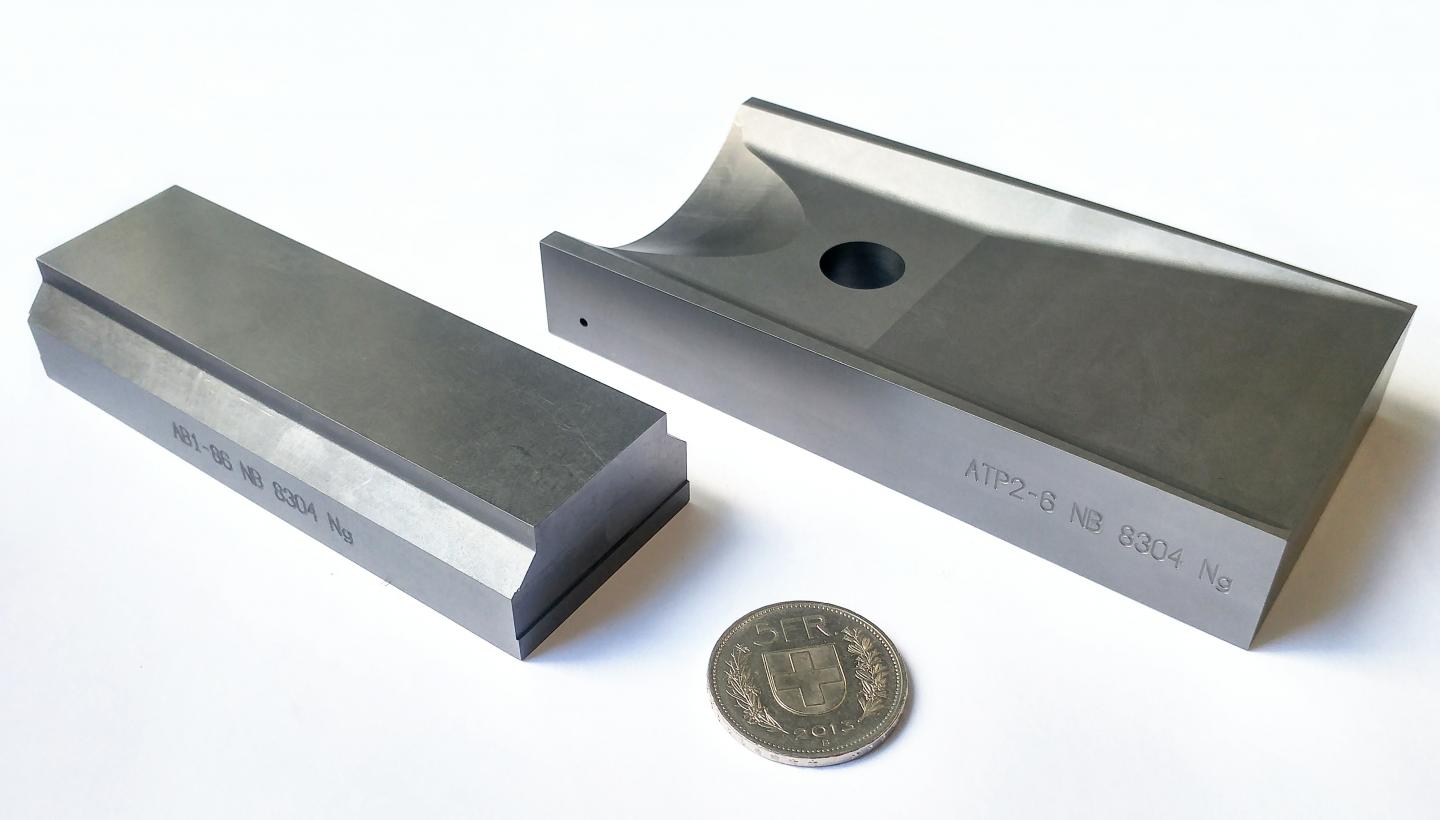As part of its accelerator R&D programme, CERN has developed a family of novel, graphite-based composite materials to perform reliably in extreme thermo-structural conditions. The most outstanding results have been with Molybdenum Carbide-Graphite composites (MoGr)—developed in collaboration with Brevetti Bizz (IT)—that exhibit thermal conductivities up to 900 W m−1K−1 , very low coefficients of thermal expansion, and a density lower than aluminium.
These properties make the materials suitable for applications where efficient thermal management and/or high temperature operability are of significant importance. The composition may also be modified to have properties required for specific applications.
Further information
- Development and properties of high thermal conductivity molybdenum carbide – graphite composites. Carbon Journal, volume 135 (2018) https://doi.org/10.1016/j.carbon.2018.04.010
Advantages & Applications
Applications
Thermal management components for:
- High-end electronics (e.g. heat spreaders and cooling blocks)
- Automobile components (e.g. cooling for advanced braking systems)
- Aerospace components
- Other thermal-management devices
Advantages
- Excellent performance in extreme thermo-structural conditions
- Performance validated in use at CERN
- Twice the thermal conductivity and ¼ of the weight as copper
Specifications
- Thermal conductivity up to 900 W m−1K−1
- Density as low as 2.5 g cm-3
- Coefficient of thermal expansion similar to semiconductors
- Resistant to temperatures higher than 2000 °C (in inert atmosphere), or 400 °C in air
- Resistance to radiation damage
- Produced by Pulsed Electric Current Sintering (PECS), also known as Spark Plasma Sintering (SPS) or Field Assisted Sintering
- Milled to final shape with conventional machining techniques
- Optional superficial coatings such as metallic molybdenum can be applied

